 Growing Asparagus - March 10, 2021 Jeff Schalau, Agent, Agriculture & Natural Resources University of Arizona Cooperative Extension, Yavapai County Asparagus is a perennial vegetable that thrives with moderate care and, following establishment, will produce a spring harvest of fresh succulent spears for years to come. Asparagus prefers an area with full sun and well-drained, sandy loam soil. The asparagus bed should be kept free of perennial weeds such as field bindweed, bermudagrass, or johnsongrass. Choose the location of your asparagus bed wisely as it will likely be in that spot for 15 years or more. Asparagus plants are dioecious, meaning they produce male and female flowers on separate plants. Some varieties are all-male hybrids that do not produce seed. The most popular varieties are UC157 (male and female plants), Jersey Giant (male only), and Jersey Knight (male only). These three varieties have done well in trials in Utah and produce large, pale green spears and the plants have good disease resistance. The once popular “Washington” varieties are no longer recommended. Most home vegetable gardeners plant asparagus crowns (established plants with roots attached). Growers grade the crowns as “1-year”, “2-year”, and “3-year” from smallest to largest. All are one year-old crowns grown from seed or division. This is Larger crowns have greater vigor and are preferred. Buy crowns or seed from a reputable nursery or seed catalog. The plants get big and rangy (5-6 feet tall), so plant them on the north or east side of your garden to avoid shading other low-growing crops. Better yet, plant them in an area designated for perennials to minimize competition for space. Plant crowns or seed after the soil has reached 50 degrees F. Asparagus yields 8 to 10 pounds or more of spears per 100 square feet of bed when well-tended. For most home gardeners, a 20-foot row or 100 square feet of bed is adequate for a family of four. That is equivalent to 20 planted crowns or 10 pounds of harvested asparagus per season. When planting seed or crowns, dig a 10” deep trench. Add compost, aged manure, or other organic matter and a small amount of phosphorus fertilizer to the bottom of the trench. Spade these ingredients into the soil before planting to help ensure vigorous root and top growth. If seeds are being used, they can be sown and covered with a little soil. If crowns are to be used, they should be spaced 1 foot apart in rows. Each row should be 4 to 5 feet apart. Crowns should have buds facing up and root systems spread out as much as possible. Irrigate the newly planted asparagus allowing it to dry somewhat between subsequent irrigations. During the first growing season, cover the crowns with loose soil one or two inches at a time as they grow taller. The beds should be filled to the original soil level by early to mid-summer. Once established, the crowns will be at a depth of 10 inches or so. Most references recommend not harvesting any spears during the first year and few if any the second year. Instead, allow the plants to grow wildly, fertilize with nitrogen, and keep them well irrigated. This will allow them to photosynthesize at maximum potential and store that energy in the crowns for the following year’s crop. Maintain a 4-6” deep layer of straw/hay/leaf mulch to suppress weeds and keep the soil friable. Add compost, manure, or nitrogen fertilizer each year following spring harvests. Add that same amount of fertilizer again in July. This will build up energy in the crowns each year. Remove the dead tops from the prior year at the end of the growing season (usually fall) and weed the area in necessary. The third spring, you may start harvesting spears after they reach 7 to 10 inches in length. Harvest spears below ground with a sharp knife. The spear should be green and tender. Spears should be large at the beginning of the spring growth flush. In time, successive spears will become smaller. A simple rule is to never harvest a spear smaller in diameter than a pencil. Allow these pencil-sized plants to grow and store energy for the following year. More information on growing asparagus is also included below. You can follow the Backyard Gardener on Twitter – use the link on the BYG website. If you have other gardening questions, email the Master Gardener Help Desk in Prescott (prescottmg@gmail.com) or Camp Verde (verdevalleymg@gmail.com) and be sure to include your name, location, and phone number. Find past Backyard Gardener columns or provide feedback at the Backyard Gardener web site: https://cals.arizona.edu/yavapai/anr/hort/byg/. Images 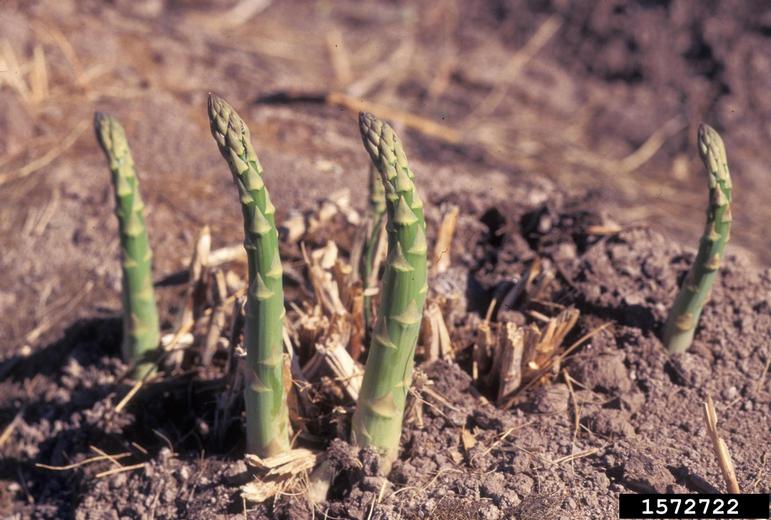 Young asparagus spears (Gerald Holmes, Strawberry Center, Cal Poly San Luis Obispo, Bugwood.org).
Young asparagus spears (Gerald Holmes, Strawberry Center, Cal Poly San Luis Obispo, Bugwood.org).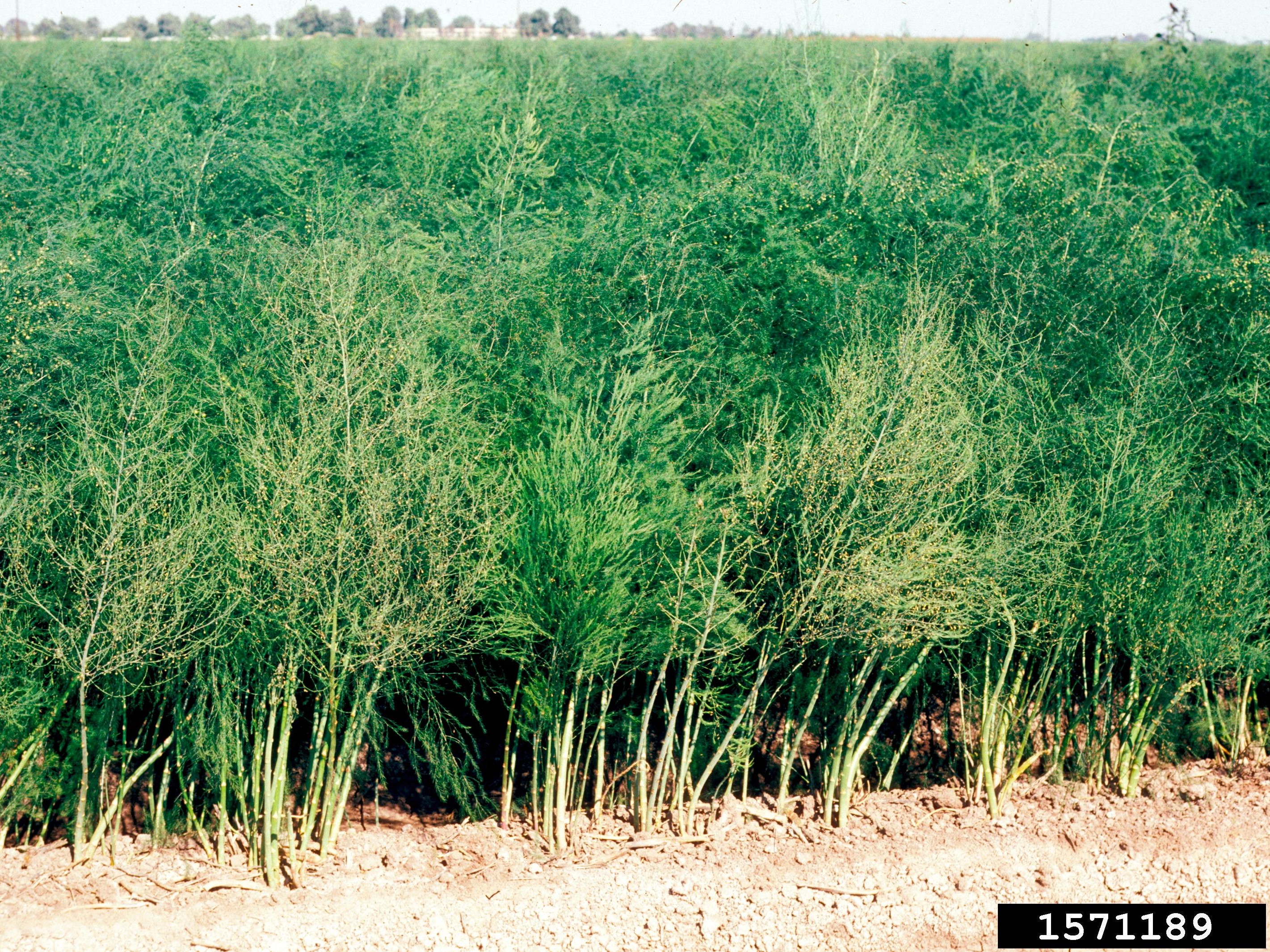 Asparagus field in California (Gerald Holmes, Strawberry Center, Cal Poly San Luis Obispo, Bugwood.org).
Asparagus field in California (Gerald Holmes, Strawberry Center, Cal Poly San Luis Obispo, Bugwood.org).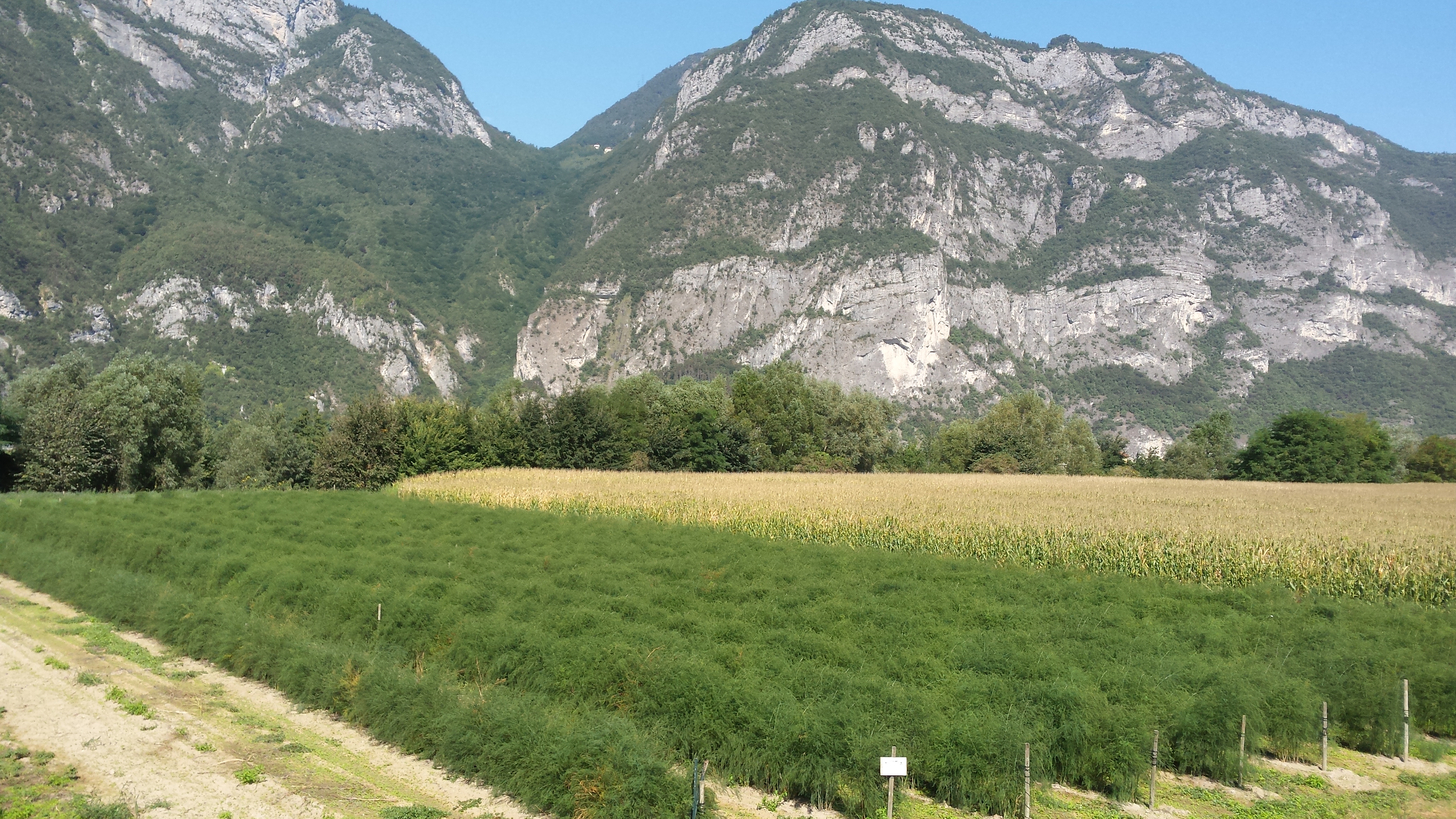 Asparagus field in Italy (Dawn Kraul, Yavapai County Associate Master Gardener).
Asparagus field in Italy (Dawn Kraul, Yavapai County Associate Master Gardener).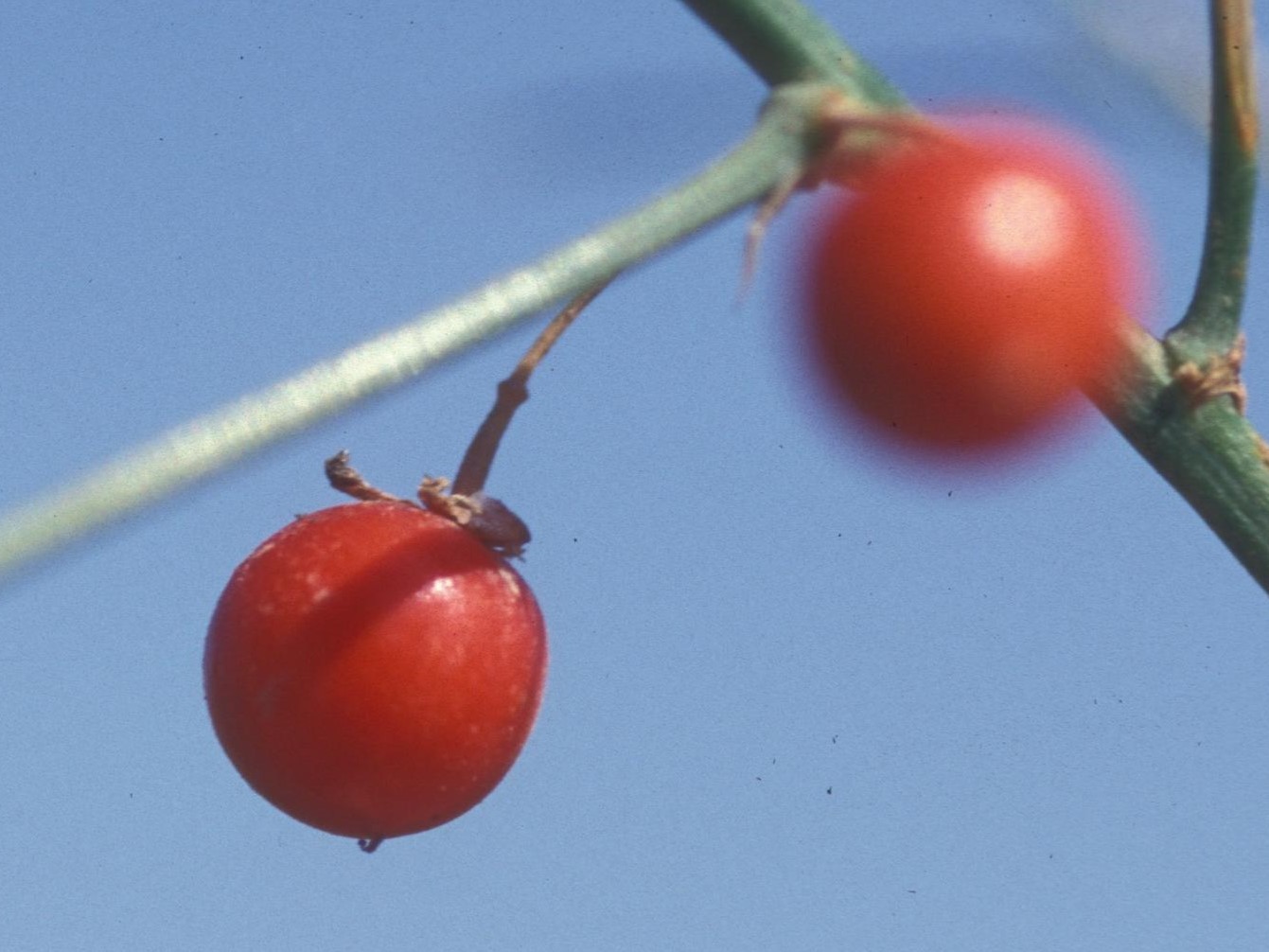 Asparagus fruit that contains seeds (Gerald Holmes, Strawberry Center, Cal Poly San Luis Obispo, Bugwood.org).
Asparagus fruit that contains seeds (Gerald Holmes, Strawberry Center, Cal Poly San Luis Obispo, Bugwood.org).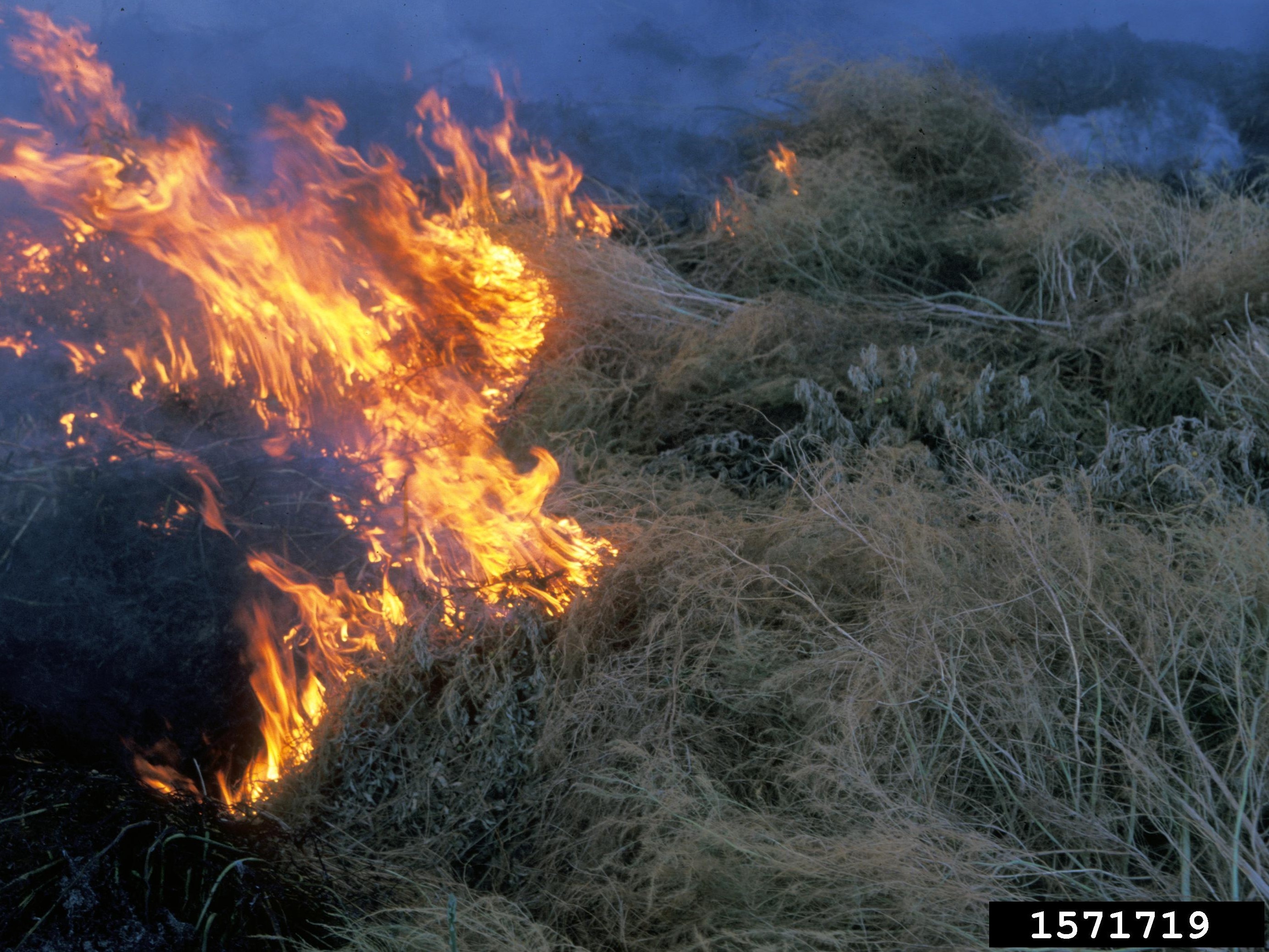 Asparagus field being burned to removed dead tops from previous season (Gerald Holmes, Strawberry Center, Cal Poly San Luis Obispo, Bugwood.org).
Asparagus field being burned to removed dead tops from previous season (Gerald Holmes, Strawberry Center, Cal Poly San Luis Obispo, Bugwood.org).Mark Hutton, University of Maine Vegetable Specialist demonstrating asparagus planting. Additional Resources Asparagus in the Garden, Utah State University Extension digitalcommons.usu.edu/cgi/viewcontent.cgi?article=1238&context=extension_curall Growing Asparagus in Home Gardens, University of Minnesota Extension extension.umn.edu/vegetables/growing-asparagus Growing Asparagus in the Home Garden, Penn State University Extension extension.psu.edu/growing-asparagus-in-the-home-garden |